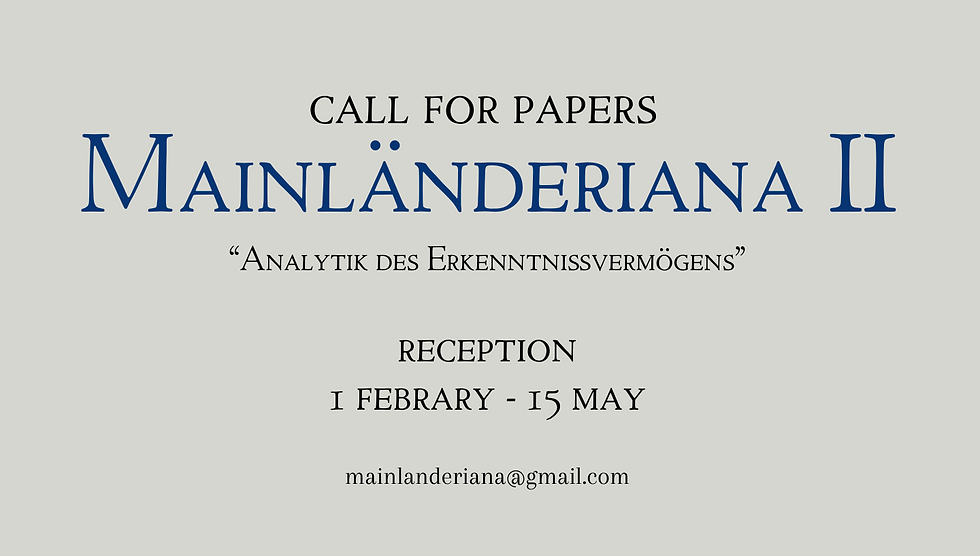CALL OF PAPERS FOR THE SECOND ISSUE
- cuadernosdepesimis
- Jun 29, 2022
- 2 min read
Updated: Jun 30, 2022

The Polemic of Pessimism in the Nineteenth Century
Being a pessimist is not just something aristocratic: no less than in the salons, also in the alleys pessimism is preached.
Wilhelm Windelband
Not with the publication of The World as Will and Representation (1819), but only after the appearance of Parerga and Paralipómena (1851) and the article “Iconoclasm in German Philosophy“ (1853) by the British John Oxenford, the philosophy of Arthur Schopenhauer and also his pessimism began to be received in ever wider circles of German and European society. From that moment and throughout the second half of the 19th century, the figure of this thinker displaced the perennial stars of German Idealism both in the academic world and outside of it. However, this acclamation of Schopenhauer as «Kaiser of German philosophy» –in the words of Karl Rosenkranz– did not take place without resistance or opposition: together with the progressive success of Schopenhauer's pessimistic thought in the different educated circles of German society, a dispute arose and hardened that, eclipsed and overshadowed in historiography by others such as materialism or Darwinism, occupied a large number of European intellectuals of that time. We refer to the Pessimismusstreit, to the polemic of pessimism.
This dispute, in which thinkers of different philosophical persuasions participated (Hegelians, neo-Kantians, positivists, theologians...), largely determined both the development of pessimistic thinking in the so-called "Schopenhauer school" - a term coined as early as 1872 by Hans Herring– as well as the image that has survived to this day of Schopenhauer and his heirs.
In this second issue of Notebooks about Pessimism, we intend to delve into this multifaceted controversy, attending, as a guide, to its two major phases or stages: the first, which would cover approximately from 1850 to 1869, in which the main representative of pessimism would be Arthur Schopenhauer; and the second, in which Eduard von Hartmann and his Philosophy of the Unconscious (1869) occupied the center of the discussions from 1870 until the outbreak of the Great War.
In accordance with this intention and with the periodization in these two major stages proposed, Notebooks about Pessimism seeks original contributions that:
–Address the political, social and religious repercussions of the polemic of pessimism.
–Carry out an analysis of the arguments of the authors who participated in the polemic of pessimism.
–Review, expand or nuance the classic structure or periodization of the polemic in the two phases mentioned.
–Explore the repercussion or the specific expression of the polemic outside the limits of the German territories: in France, the United Kingdom, the United States of America, Spain or Italy –especially when in those countries there was a representative of pessimism in the century XIX.
–Present and translate into Spanish or English texts of special importance for the dispute: articles, reviews, letters... from the participants in the polemic of pessimism.
Héctor del Estal Sánchez






Comments